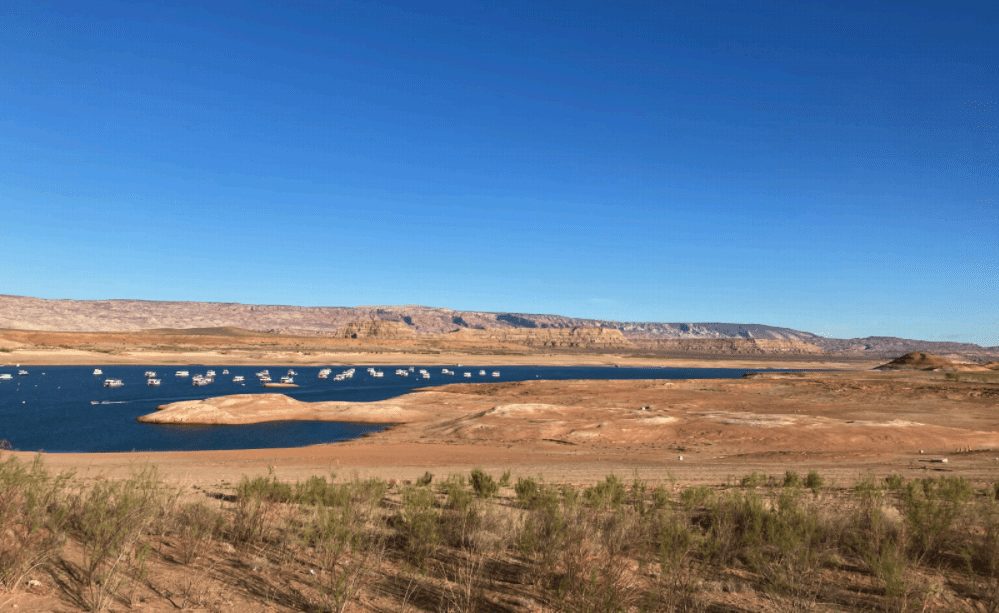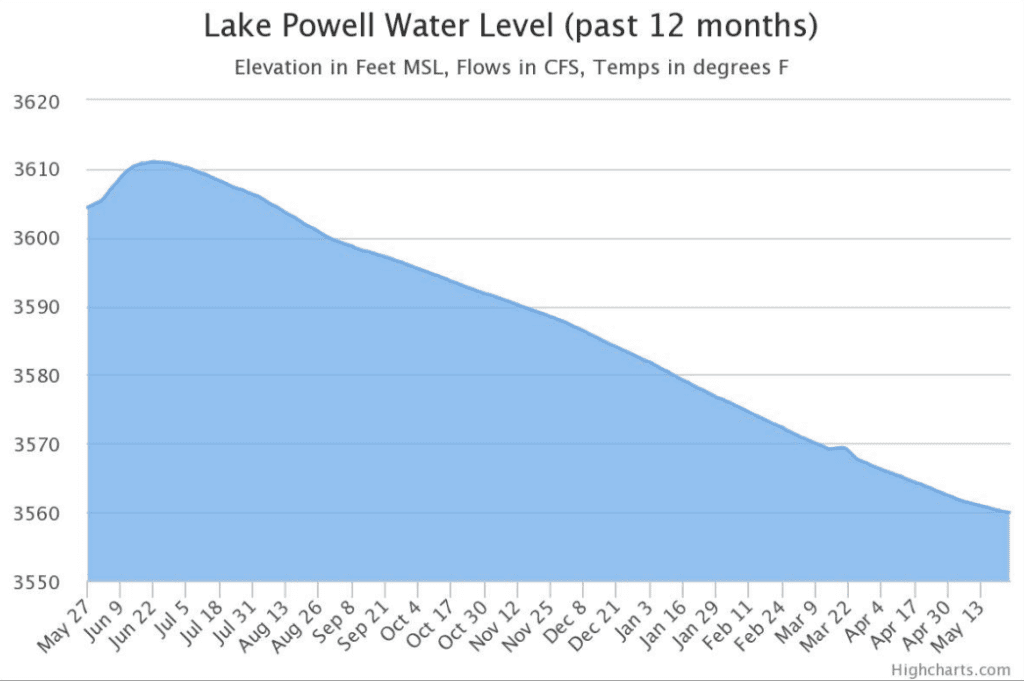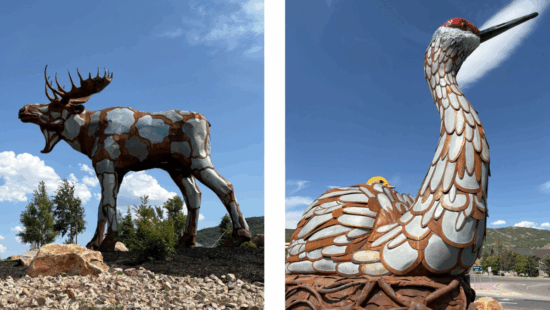News
Lake Powell water level at a historic low

Lake Powell on May 25, as seen from Bullfrog, Utah. Photo: Parker Malatesta
BULLFROG, Utah. — As of May 25, Lake Powell is 43.9 feet lower from a year ago. At 3559.89 feet, the lake is down 140.08 feet from full pool. The man-made reservoir is only receiving 39.4% of its average water inflow so far this year.
“It was so depressing,” said Tim of Glenwood Springs, Colorado, describing his last trip in Bullfrog. He has been coming to Glen Canyon since 1979.
Recent projections from the Bureau of Reclamation are pushing the Upper Colorado River Commission to develop a drought response plan. The commission is made up of officials from Utah, Colorado, Wyoming, New Mexico, and the federal government. The minimum probable projection for mid-2023 shows the water level reaching close to below the minimum power pool level of 3,490 feet. That is the minimum water level needed for Glen Canyon Dam to produce power generation.
A drought plan drafted in 2019 calls for water releases to Lake Powell if it falls below a critical threshold of 3,525 feet. The most probable estimate from the Bureau of Reclamation Water Operations (BOR) report shows it falling below that level as early as March next year. Reservoirs that would be called upon to fill Powell include Flaming Gorge, Blue Mesa, and Navajo.
“It was really a toilet bowl tank for Mead,” Tim said, referring to the creation of Powell. Lake Mead is dealing with its own issues at the moment, with current projections from BOR forecasting the Arizona reservoir hitting a Tier 2 water shortage in 2023.
The flow of the Colorado River, which feeds Lake Powell and Mead, is operated under a vast series of laws and regulations known widely as “the Law of the River.” The most important statute is the Colorado River Compact, which was signed nearly a century ago in 1922. We now know because of various tree ring studies that the estimates used to craft the compact were far too optimistic, the early 20th century saw some of the wettest years since the 1400s.
The legal right to use more than every gallon of the river is claimed by someone. Theoretical rights are known to lawyers as “paper water.” The drought in the western U.S. has contributed to a large disparity between these rights and the actual flow of the river. Since the early 1900s, water demand in the Colorado River basin has increased while water supply has decreased. Per the U.S. Drought Monitor, the majority of Utah is currently experiencing either an exceptional or extreme drought.

Don and Mary, a couple from Heber City, Utah, have come to Lake Powell since it was being filled in 1969. “It’s the lowest we’ve ever seen it,” Mary said. They recommend all boaters use either a depth finder or spotter, given that the water is consistently decreasing.
They don’t agree with the idea of the pipeline to Washington County. The Lake Powell pipeline project includes a 140-mile tap from Page, Arizona to the fast-growing St. George area.
“We devote way too much water to agriculture in Utah,” said Don. The couple was split on what should be done with Lake Powell. Don feels there should be a calculated median among all the southwestern reservoirs that states can compromise on. Mary leaned towards the argument of emptying the lake into Mead.
For now, the water level continues to drop a little more than an inch a day.
A Bullfrog resident, who wished to remain anonymous, said on the issue of the water levels, “Mother Nature always wins.”
Appreciate the coverage? Help keep Park City informed.
TownLift is powered by our community. If you value independent, local news that keeps Park City connected and in the know, consider supporting our newsroom.


















